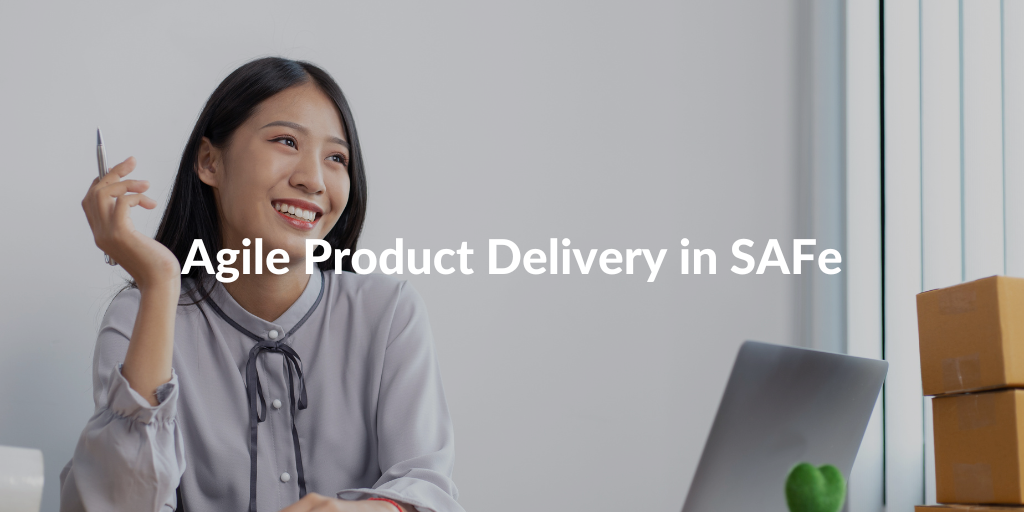Categories
Tags
Newsletter
Subscribe to the QRP International neswletter and get all the news on trends, useful contents and invitations to our upcoming events
Subscribe
SAFe is partly based on the seven core competencies of the Lean Enterprise. These core competencies are used to gain and maintain a competitive advantage in today’s digital environment. In this article, we will discuss one of these competences: Agile Product Delivery.
Agile Product Delivery is a customer-centred approach to define, build and release a continuous flow of valuable products and services to customers and users. It is one of the seven core competencies of the Lean Enterprise.
To achieve business agility, companies must rapidly increase their ability to deliver innovative products and services. The company must balance a focus on execution with a focus on the customer.
In combination with agile practices, Devops practices help to support the continuous release of valuable products and services. Value is delivered at any time to meet customer and market demand. Iterative development results in agile product delivery that improves business agility.
Agile Product Delivery has three dimensions:
Whenever a customer-centered company makes a decision, it fully considers the effect it will have on its end users.
Customer-centric companies do not just listen to customers asking for functionality. Instead, they invest the time necessary to identify customer needs and build solutions that meet those needs.
The company acts through empathy, seeing the world from the customer’s perspective and designing a complete solution to meet all needs. This approach leads to long-term relationships with the customer, enabling the company to create value for the customer.
Design thinking takes over when a clear and continuous understanding of the target market, the customers, the problems they face and the work to be done is required. Design thinking is an integral part of customer centricity and consists of two main activities that culminate in a sustainable solution:
Various methods are used to approach the customer: personas, which are fictional characters representing the different people who might use the product. Empathy maps to identify with the customer; this is a tool that helps teams develop a deep and shared understanding and empathy for the customer.
Customer-focused companies seek to create a continuous flow of value for their customers. The timing of these releases is determined by various factors. Some companies may release very frequently, while others will have less frequent releases. Overall, the SAFe framework refers to this functionality as Release on Demand.
The term ‘Release on Demand’ refers to the mechanisms and processes by which new functionality is deployed in production and released immediately or incrementally to customers based on demand. The timing of feature releases varies from company to company.
Release times, however, do not coincide with the workflow of the people creating the solutions. The teams use an optimised process model. In SAFe, this is known as Develop on Cadence, a coordinated set of practices that support Agile teams by providing a reliable series of events and activities that occur on a regular and predictable schedule.
Iterations are the basic element of Agile development. Each iteration is a standard timebox of fixed length in which Agile teams provide incremental value. For Agile teams, this is typically working software and hardware, while business teams will provide other elements of value.
Together with Agile practices, DevOps practices help support the value delivery of any product or service. Value is delivered at all times to meet customer and market requirements. Iterative development results in Agile product delivery that improves business agility.
Creating the competencies to reliably deliver value every time is hard work. To do this, it is necessary to adopt the DevOps mindset and culture and create an increasingly automated Continuous Delivery Pipeline.
The Continuous Delivery Pipeline represents the workflows, activities and automation required to take a new piece of functionality from conception to an on-demand release of value to the end user. The pipeline consists of four aspects: Continuous Exploration (CE), Continuous Integration (CI), Continuous Deployment (CD) and On-Demand Release.
The result of Agile product delivery is greater business agility that leads to better results for the company and customers.
A modern organisation must be agile to the core. Lean and Agile principles must be so deeply embedded that they permeate every level of the hierarchy and every business unit. This is what the latest iteration of the Scaled Agile Framework makes possible: true business agility. And Agile Product Delivery, fueled by Design Thinking, is a vital aspect of the framework.
QRP offers Leading Safe courses, if you would like more information please contact us!
Source: Scaled Agile Framework